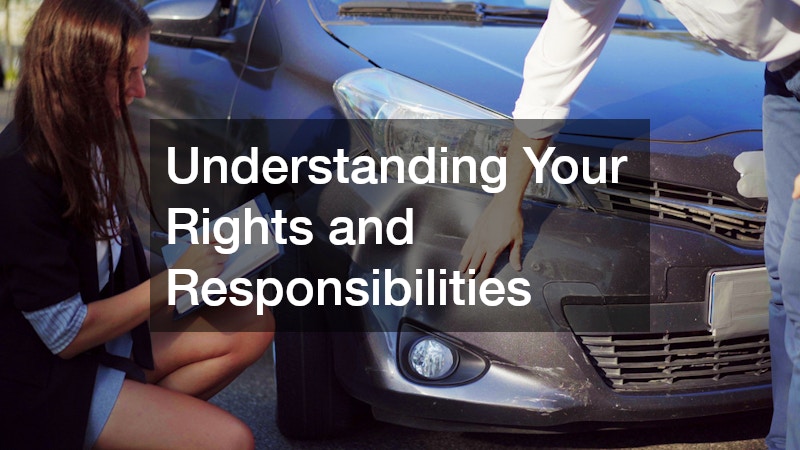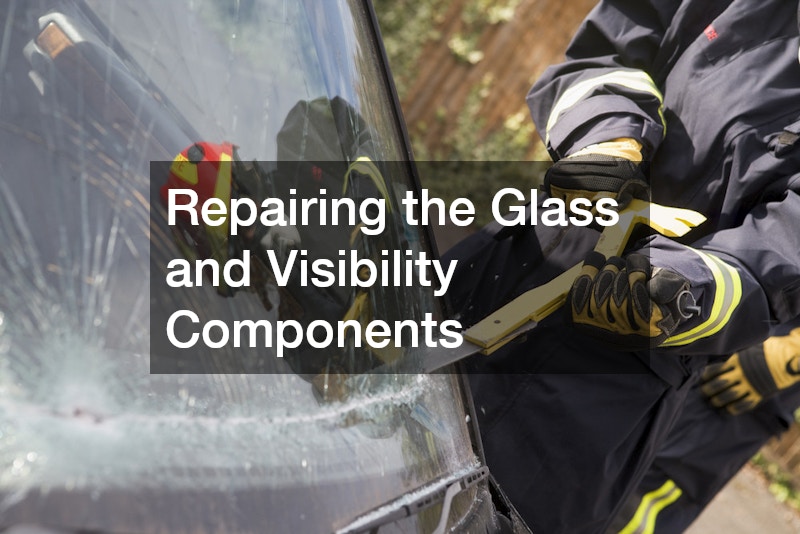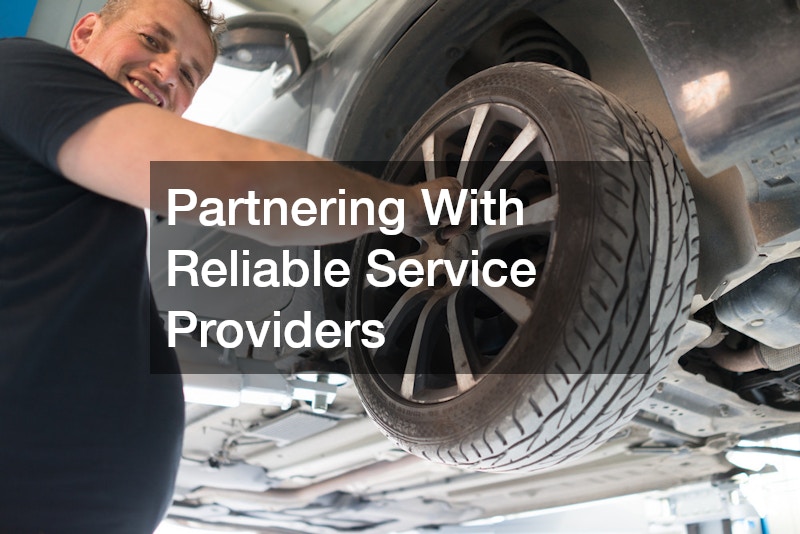A car accident can happen in the blink of an eye, leaving you with more than just damage to your vehicle—it can throw your entire routine into chaos. Between arranging towing, managing repairs, dealing with insurance companies, and possibly seeking legal help, the aftermath can feel overwhelming. Yet, knowing the right steps to take after a crash can make a huge difference in your recovery timeline and overall stress level. Understanding how to manage each part of the process—from the initial tow to the final repair—ensures your vehicle is restored properly and your rights are protected.
Step 1: Assess the Scene and Prioritize Safety
Immediately following an accident, safety should be your top priority. Move your vehicle out of traffic if it’s safe to do so, turn on hazard lights, and check for injuries to yourself and others involved. Call emergency services if anyone is hurt or if the crash caused significant property damage. Even if the collision seems minor, filing a police report is essential—it serves as an official record that may be required by insurance companies later.
Document the scene thoroughly by taking clear photos of all vehicles, visible damage, skid marks, and surroundings. Collect contact and insurance information from the other driver, as well as names of any witnesses. Avoid admitting fault or speculating about what happened. Instead, stick to factual details when speaking with law enforcement. Keeping calm and organized during these initial moments lays the groundwork for smoother recovery ahead. Once your safety is ensured and documentation complete, it’s time to arrange for your vehicle to be moved to a secure location for evaluation and repair.
Step 2: Coordinating Immediate Assistance After the Crash
Once you’ve ensured everyone’s safety and gathered necessary information, the next step is arranging for your vehicle to be removed from the accident scene. Reliable tow truck services are critical at this stage. If your car cannot be driven, a professional towing company can transport it safely to a designated repair facility or storage area. Many insurance providers have preferred towing partners, but you also have the right to choose your own.
It’s helpful to confirm towing details in advance if possible. Make sure you know where your car is being taken and obtain a receipt for the service. Keep in mind that the tow destination matters—choosing a reputable repair shop early can save you time later. If your car is being impounded or taken to a police lot temporarily, coordinate with your insurance company to have it relocated to a trusted facility as soon as possible.
Step 3: Understanding Your Rights and Responsibilities

After the immediate chaos has settled, it’s crucial to understand your rights as a driver involved in an accident. This includes knowing how insurance claims work, your responsibility for reporting, and how fault determination might affect reimbursement. Many people underestimate how complex this stage can be. Insurance adjusters often require detailed reports, and minor miscommunications can delay payments.
Before speaking with insurance representatives, make sure you’ve reviewed your policy carefully. Note any coverage limits, deductibles, and special provisions that apply to towing, rentals, or repairs. Always keep a written record of your communications. It’s wise to document every call, including dates and names of the representatives you speak with.
Step 4: Choosing the Right Repair Professionals
Once your car has been towed and your insurance claim is underway, the next step is selecting from reputable auto repair shops to handle the damage. The quality of your repair experience can vary widely, so choosing the right professionals is essential. Start by checking certifications from organizations such as ASE (Automotive Service Excellence) or I-CAR (Inter-Industry Conference on Auto Collision Repair). These credentials indicate the shop meets industry standards for training and repair quality.
Ask for detailed repair estimates and compare multiple options before approving any work. Look for transparency in labor costs, part replacements, and repair timelines. Be sure to confirm whether the shop uses original equipment manufacturer (OEM) parts or aftermarket alternatives.
Step 5: Repairing the Glass and Visibility Components

A cracked or shattered windshield can compromise both your safety and your ability to drive legally. That’s why windshield replacement is often one of the first priorities after a car accident. Modern windshields aren’t just pieces of glass—they play a vital role in vehicle structure, supporting airbags and roof integrity. Delaying replacement can cause further cracks to spread or weaken the vehicle’s safety features.
Always select a repair shop experienced in handling your vehicle’s make and model. Many advanced driver-assistance systems (ADAS) depend on sensors embedded in the glass, which require precise calibration after installation. Using the right adhesive materials and ensuring proper curing time is equally important for maintaining strength and preventing leaks.
Your insurance policy may cover all or part of the replacement cost, depending on your coverage type. If you’re paying out of pocket, ask for a warranty on the workmanship and materials. A properly installed windshield restores not only visibility but also peace of mind, ensuring your vehicle is safe and road-ready once again.
Step 6: Evaluating Cosmetic Damage and Small Repairs
Even minor accidents can leave your vehicle looking worse for wear. Dents, scratches, and small panel deformations may not affect functionality, but they can significantly impact resale value and aesthetics. That’s why auto dent repairs are a key step in restoring your car to its pre-accident condition.
Paintless dent repair (PDR) is often the preferred method for smaller dents caused by fender benders or hail. It involves massaging the metal from behind the panel to remove the imperfection without the need for repainting. This approach is faster, more cost-effective, and maintains the vehicle’s original finish.
Step 7: Addressing Internal and Mechanical Damage

Not all accident-related damage is visible. Hidden mechanical issues can develop in the engine, transmission, or suspension, even after a low-speed impact. Visiting a certified engine repair shop ensures that internal components are inspected and repaired properly. Mechanics can check for leaks, misalignments, or performance changes that may not be apparent during initial assessments.
Modern vehicles contain complex electronics and sensors that can be jarred loose during an accident. A professional diagnostic scan identifies underlying problems before they cause major failures. Pay particular attention to warning lights on your dashboard—ignoring them could lead to costly damage later.
Step 8: Comparing Financing Options for Post-Accident Expenses
If you need to finance repairs or purchase a replacement vehicle, understanding the differences between a bank vs credit union auto loan can help you make the best decision. Banks typically offer convenience and quick approval processes, while credit unions often provide lower interest rates and more flexible repayment options.
Credit unions tend to focus on member relationships rather than pure profit, which may translate into more personalized service. They might also be more willing to work with individuals who have lower credit scores or unique financial situations following an accident. On the other hand, banks may offer larger loan amounts and advanced online management tools.
Before choosing, compare interest rates, fees, and loan terms from both types of institutions. Use pre-qualification tools when possible to understand your borrowing power without affecting your credit score. Financing decisions made carefully now can save you hundreds or even thousands of dollars over time. Smart borrowing choices support a smoother financial recovery after an unexpected collision.
Step 9: Managing Insurance and Legal Considerations
Accidents often bring financial and legal challenges that extend beyond vehicle repairs. Insurance negotiations can be complex, and disagreements about liability or claim value are common. If you find yourself uncertain or overwhelmed, consulting a car accident attorney can help you navigate the process.
An attorney specializing in auto accidents can review your case, communicate with insurers, and ensure your rights are fully protected. They understand the nuances of injury claims, property damage recovery, and potential compensation for lost wages or medical costs. Their involvement can also expedite settlements and prevent undervaluation of your claim.
Before hiring legal representation, check their experience, client reviews, and success rate with similar cases. Many attorneys work on contingency, meaning they only collect payment if you win your case. Legal guidance can provide peace of mind during what is often a stressful and confusing time, ensuring your recovery—both financial and personal—stays on track.
Step 10: Restoring Structural Integrity and Safety
When a vehicle sustains significant damage, auto collision repair becomes the cornerstone of bringing it back to life. This type of repair focuses on fixing frame alignment, panel reconstruction, and restoring factory safety standards. Advanced equipment, like computerized frame straighteners, allows technicians to measure and correct deviations within millimeters of manufacturer specifications.
Certified collision centers have access to structural repair data for specific models, ensuring precision. It’s essential that airbag systems, crumple zones, and reinforced sections are repaired correctly, as these elements are vital to passenger safety. Shops that invest in continuing education and technology are more likely to deliver long-lasting, high-quality results.
After completion, request a full inspection and test drive to confirm everything feels stable. A thorough auto collision repair not only restores appearance but ensures your car’s structure is safe for future use. Comprehensive restoration transforms a damaged vehicle into one you can trust again on the road.
Step 11: Partnering With Reliable Service Providers

Throughout your accident recovery process, you’ll likely interact with multiple towing companies, mechanics, and repair specialists. Building a reliable network of trusted providers can simplify future emergencies. Look for companies with positive reviews, transparent pricing, and 24-hour support.
When selecting towing or repair partners, ask whether they provide roadside assistance or priority response programs. Some insurance companies offer memberships or partnerships that include discounted services. Establishing a relationship with dependable professionals means you’ll know exactly who to call in future roadside situations.
Additionally, consider storing important contact numbers—such as your insurance agent, preferred repair shop, and a reputable towing provider—in your phone or vehicle glove box. Having these details ready saves valuable time during stressful events. Reliable partnerships transform chaos into control, ensuring each phase of your recovery moves efficiently from start to finish.
Step 12: Seeking Legal and Emotional Support
Recovering from an accident isn’t only about fixing the car—it’s also about restoring your confidence and peace of mind. Working with a local auto accident attorney can help you manage ongoing legal issues, while emotional recovery might require leaning on support from friends, family, or professional counseling.
Many people experience anxiety about driving again or feel overwhelmed by paperwork and insurance negotiations. Seeking help is not a sign of weakness—it’s an essential part of full recovery. Legal experts can handle complex communications with insurance companies, leaving you free to focus on personal healing.
If your accident involved injuries or extended financial losses, an attorney can also help pursue appropriate compensation. This may include coverage for medical treatment, lost income, or rehabilitation costs. Addressing both emotional and legal aspects ensures you rebuild stability in all areas of your life, moving forward stronger and more informed than before.
Step 13: Preventing Future Accidents and Maintaining Readiness
Once your vehicle is repaired, it’s a good time to evaluate your driving habits and emergency preparedness. Review your insurance coverage to ensure it adequately protects against future incidents. Consider adding roadside assistance coverage or mechanical breakdown protection if it isn’t already included.
You should also familiarize yourself with trusted towing companies in your area for faster response in emergencies. Keeping your vehicle well-maintained—checking tires, brakes, and lights regularly—can help prevent future accidents. Schedule routine inspections, especially if you drive long distances or under challenging weather conditions.
Beyond the vehicle, personal preparedness matters too. Keep an emergency kit in your car with essentials like a flashlight, water, first aid supplies, and contact numbers. By taking preventive measures, you minimize risks and build confidence knowing you’re ready for the unexpected. Proactive care transforms an unfortunate event into a lasting lesson in safety and responsibility.
Recovering from a car accident involves much more than simply fixing your vehicle—it’s about navigating a complex process with confidence and clarity. From securing tow truck services immediately after the crash to handling insurance claims, coordinating repairs, and exploring financing options, every decision matters. Working with reputable auto repair shops, trusted legal professionals, and transparent lenders ensures that each step of your recovery is efficient and fair.
